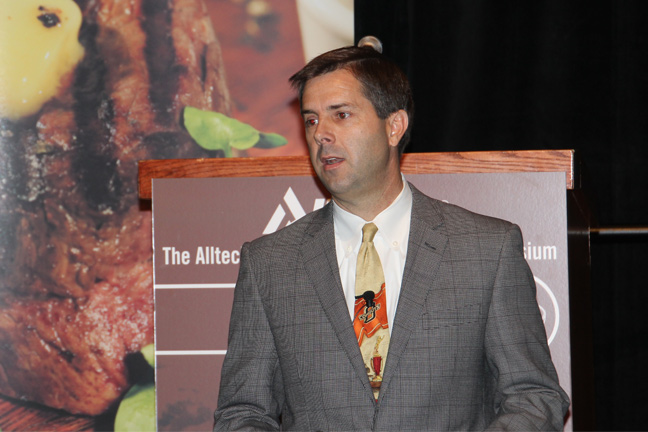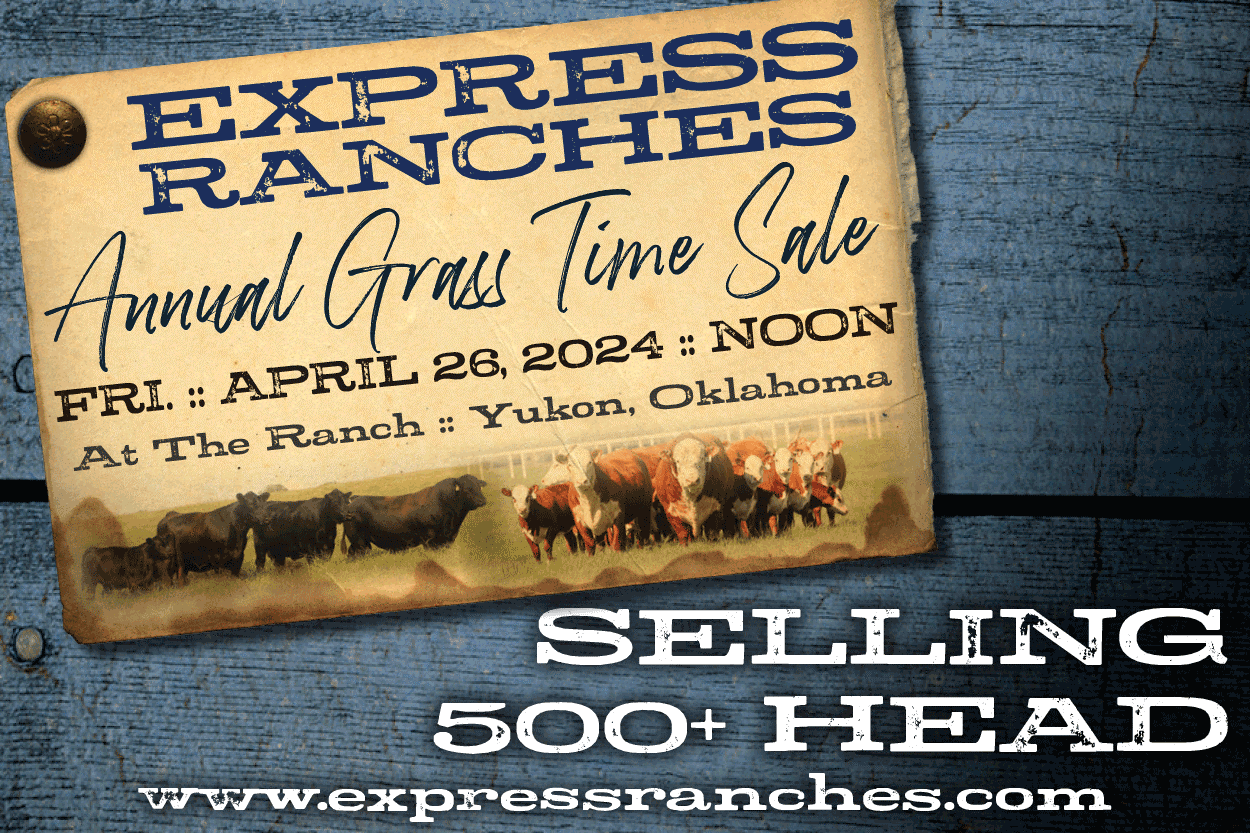
Beef Buzz News
Maximizing Forage Usage Crucial to Maintaining Herd Size, Lalman Says
Tue, 25 Sep 2012 12:00:26 CDT

With drought conditions persisting across most of the state, OSU Extension Beef Specialist Dr. Dave Lalman says a lot of cow-calf producers are currently taking stock of their operations. He spoke with Ron Hays recently about the potential for rebuilding diminished herds.
Lalman says producers may have a little culling left to do as they preg check cows for the spring calving season and as they take stock of available forage. With cow numbers as low as they are, he says we may see some decreases, but he is not expecting a large drop.
"My sense is, of course if we think about the big picture, in 2010 we had just over two million cows. The 2011 drought causes us to go down to 1.7 million cows, approximately. And so we're still very low in cow numbers which turned out to be a good thing this year because of the severe drought conditions. So I don't think there's a lot of major adjustments that need to take place.
"Fortunately, in the central and western part of the state, apparently there was a lot of cool season forage hay harvested this year mostly because there was no carryover. People recognized there was no carryover and we needed hay, so they baled a lot of that. So that's going to be a resource that helps us out a lot. I suspect that the appearance of wheat pasture will determine how deep some people have to cull."
Many producers are trying to size up their forage stocks and match them to the number of cows they can carry through the winter. Lalman says with prudent management and decreased wastage, producers may be able to carry a few more head than in the past.
"If a mature, say 1200-pound cow, consumes around 25 pounds of forage a day, and, naturally it's going to vary based on forage quality, but let's say 25 pounds, you can just kind of start with that number and go from there. If your pastures are already short and getting to the point of being overgrazed, it may be time to pull them off. And you can calculate how much harvested forage you would need to get them through 150 days, maybe 175 days, until green up next spring."
Lalman says that 25-pound-per-day forage requirement may need to be increased by about 25 percent if wastage is a problem. He says producers can reduce wastage loss by using hay rings with solid lower side panels. Waste can be further reduced to less than five percent if a modified cone is used at the top of the feeder.
He also says that if producers will limit the amount of feed provided to each cow to around 22 or 23 pounds, they will clean up the hay much better. He says producers can calculate the amount of hay they put out each day for the cattle or just pay close attention to how much the cows actually eat and don't provide more than necessary. Another method is to put the hay feeders inside a fenced area and only allow the cows six to eight hours of access each day.
Lalman also says producers also need to match the quality of their forage to the needs of their particular cows.
"If you were to limit access, say cut down on their hay consumption compared to free choice consumption, let's say 25 is free choice and you limit it to 22, you probably wouldn't want to do that with old cows who have broken mouths. You probably wouldn't want to do that with first-calf heifers. And you probably wouldn't want to do that with real low quality hay. Let's say three to four percent crude protein, about 50 percent TDN-total digestible nutrients-anything less, probably in the 40s, you wouldn't want to limit access to that low quality of material."
If and when we get rain again, Lalman says there's a great opportunity for Oklahoma producers to increase their cow herds.
"Once again, we're down 300,000 cows in the state of Oklahoma, approximately. And, so, we're going to need some replacement females once we get a more normal pattern of rainfall and forage conditions improve. I'm telling people 'If you can hang on, if you can limit waste and control your costs, there is opportunity.'"
Click on the LISTEN BAR below for today's Beef Buzz. The Beef Buzz is a regular feature heard on radio stations around the region on the Radio Oklahoma Network- but is also a regular audio feature found on this website as well. Be sure to check out our archives for older Beef Buzz shows covering the gamut of the beef cattle industry today.
WebReadyTM Powered by WireReady® NSI
Beef News



















